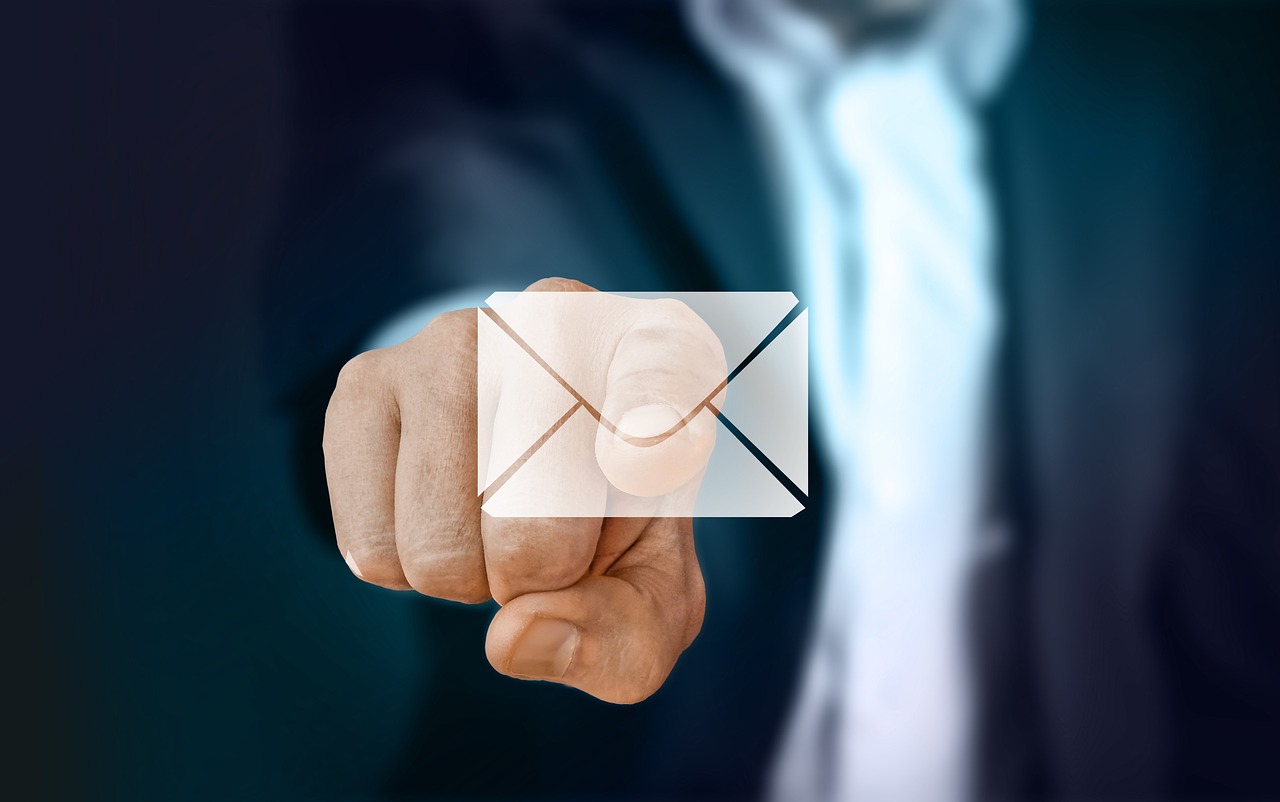How Can Email Marketing Fuel Your Overall Inbound Strategy

Email marketing has become an essential component of digital marketing strategies. When used effectively, it can fuel your overall inbound strategy, driving engagement, nurturing leads, and increasing conversions. In this article, we will explore how email marketing can significantly impact your inbound strategy, and we’ll provide valuable insights on how to optimize your email campaigns for maximum effectiveness.
In the digital age, businesses are continually seeking innovative ways to engage with their target audience and convert them into loyal customers. Email marketing has emerged as a powerful tool for achieving these goals. It involves sending targeted messages to a list of subscribers who have expressed interest in your products or services. When integrated into your inbound marketing strategy, email marketing can enhance customer relationships, boost brand awareness, and drive revenue growth.
What is Email Marketing?
Email marketing is a direct marketing approach that involves sending commercial messages to a group of people via email. These messages can include promotional content, newsletters, updates, or any other information deemed valuable to the recipients. Email marketing allows businesses to connect with their audience in a more personalized and cost-effective way compared to traditional marketing channels.
The Importance of Inbound Marketing
Before we delve into the role of email marketing in your inbound strategy, let’s briefly touch upon the significance of inbound marketing itself. Inbound marketing focuses on attracting, engaging, and delighting potential customers through valuable content and experiences. Unlike outbound marketing, which interrupts audiences with intrusive ads, inbound marketing aims to establish a connection with prospects by providing them with relevant information and solutions to their problems.
Integration of Email Marketing in the Inbound Strategy
To effectively integrate email marketing into your inbound strategy, you need to consider the following key aspects:
Building an Email List
The first step in utilizing email marketing for your inbound strategy is building a quality email list. Here are some strategies to grow your list organically:
Creating Valuable Content: Offer valuable content on your website, such as blog posts, ebooks, or whitepapers, that visitors can access in exchange for their email addresses. This ensures that the people subscribing to your list have a genuine interest in your industry or niche.
Using Lead Magnets: Create lead magnets, such as free tools, templates, or exclusive discounts, to entice visitors to subscribe to your email list. Lead magnets should be highly relevant and provide immediate value to the audience.
Optimizing Website Forms: Place strategically positioned opt-in forms on your website to capture visitor information. Ensure that the forms are easy to fill out and clearly explain the benefits of subscribing.
Segmentation and Personalization
Segmentation and personalization are crucial elements of effective email marketing. By dividing your email list into specific audience segments and tailoring your content accordingly, you can deliver highly targeted messages that resonate with individual subscribers. Personalization goes beyond addressing recipients by their names; it involves crafting emails that address their pain points, preferences, and interests.
Nurturing Leads with Email Campaigns
Email campaigns play a vital role in nurturing leads throughout their customer journey. Here are some types of email campaigns you can implement:
Welcome Emails: Send a series of automated welcome emails to new subscribers, introducing your brand, highlighting key offerings, and setting expectations for future communication.
Drip Campaigns: Drip campaigns involve sending a series of emails at specific intervals to educate, engage, and guide leads through the sales funnel. Each email builds upon the previous one, gradually nurturing the prospect’s interest.
Promotional Emails: Use promotional emails to showcase new products, offer exclusive discounts, or inform subscribers about limited-time offers. Make sure to provide compelling reasons for recipients to take action.
Driving Traffic and Engagement
Email marketing can also drive traffic to your website and increase overall engagement. Here are some strategies to achieve this:
Call-to-Action Buttons and Links: Include clear and enticing call-to-action buttons or links in your emails to direct recipients to relevant landing pages on your website. This can lead to increased website traffic and conversions.
Social Media Integration: Encourage email recipients to follow your brand on social media platforms by including social media icons and links in your emails. This expands your reach and fosters a deeper connection with your audience.
A/B Testing for Optimization: Experiment with different subject lines, email designs, and content formats through A/B testing to identify the most effective strategies for engaging your audience. Continuously optimize your email campaigns based on the insights gained from testing.
Measuring and Analyzing Email Performance
To gauge the success of your email marketing efforts, it’s crucial to measure and analyze key performance metrics. Here are some metrics to focus on:
Open Rates and Click-through Rates: Monitor the percentage of subscribers who open your emails and the number who click on the links within them. These metrics provide insights into the effectiveness of your subject lines, email content, and call-to-action buttons.
Conversion Tracking: Track the number of subscribers who complete desired actions, such as making a purchase or signing up for a service, after clicking on a link in your email. This helps you evaluate the overall impact of your email campaigns on conversions.
Split Testing: Conduct split tests by sending different versions of your emails to segments of your list. Compare the performance of each version to determine which elements yield better results. This iterative approach allows you to continuously refine and optimize your email marketing strategy.
Best Practices for Effective Email Marketing
To make the most of your email marketing efforts, keep the following best practices in mind:
Compliance with Regulations: Familiarize yourself with email marketing regulations, such as GDPR or CAN-SPAM, to ensure that your campaigns adhere to legal requirements. Obtain explicit consent from subscribers and provide an easy way for them to unsubscribe if they wish to.
Mobile-Friendly Design: Optimize your emails for mobile devices since a significant portion of email opens occur on smartphones or tablets. Use responsive email templates that adapt to different screen sizes and ensure that your content is easy to read and navigate on small screens.
Testing and Optimization: Regularly test different elements of your emails, such as subject lines, images, and CTAs, to identify what resonates best with your audience. Keep track of the results and iterate on your approach to continually improve your email marketing performance.
Conclusion
Incorporating email marketing into your overall inbound strategy can greatly enhance your ability to attract, engage, and convert leads. By building a quality email list, segmenting your audience, nurturing leads, driving traffic, and measuring performance, you can harness the power of email marketing to fuel your business growth. Remember to implement best practices and continuously optimize your campaigns based on data-driven insights.
FAQs
Q1: Can I buy email lists to jumpstart my email marketing efforts?
It’s not recommended to buy email lists as they often contain outdated or irrelevant contacts. It’s best to focus on organic list building through lead magnets and valuable content.
Q2: How often should I send emails to my subscribers?
The frequency of your emails depends on your audience and their preferences. Test different sending frequencies to find the right balance between staying top-of-mind and avoiding overwhelming your subscribers.
Q3: Should I use plain text emails or HTML-designed emails?
The choice between plain text and HTML-designed emails depends on your brand image and target audience. Both formats can be effective if used strategically, so consider your audience’s preferences and your campaign goals when making a decision.
Q4: How can I improve my email open rates?
To improve email open rates, focus on crafting compelling subject lines that pique curiosity or offer clear benefits. Personalization and segmentation can also help increase relevance and engagement.
Q5: What metrics should I track to measure the success of my email campaigns?
Key metrics to track include open rates, click-through rates, conversion rates, and unsubscribe rates. These metrics provide insights into the engagement and effectiveness of your email campaigns.







I’ve recently started a site,the information you provide on this web site has
helped me greatly. Thanks for all of your time.